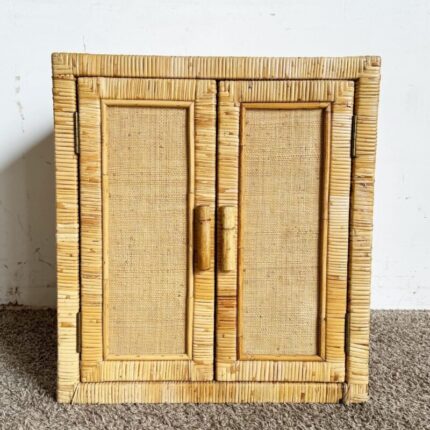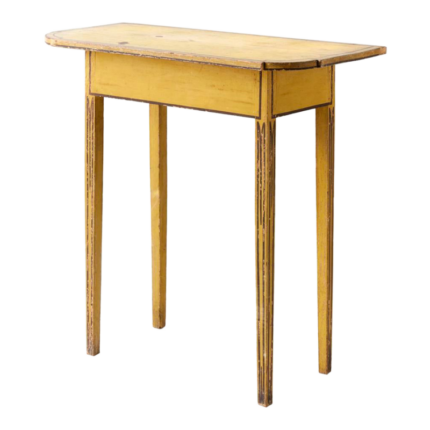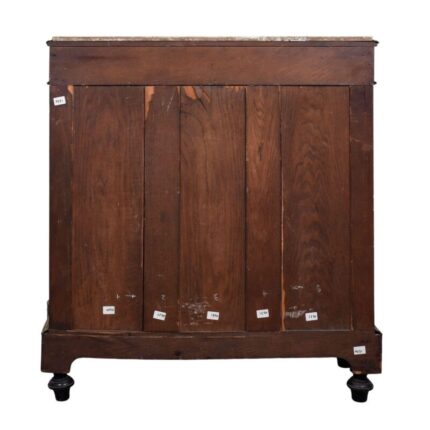The shaped Carrara marble top features a decorative three quarter pieced brass gallery over a frieze drawer decorated with beaded panels. It is raised on four elegant tapering and fluted Doric columns united by an undertier on cone shaped ormolu mounted feet.
It has beautifully refined proportions and retains excellent colour and patination.
The Botanical name for the mahogany this item is made of is Swietenia Macrophylla and this type of mahogany is not subject to cites regulation.
Condition:
In excellent condition having been beautifully cleaned, polished and waxed in our workshops, please see photos for confirmation.
Dimensions in cm:
Height 87 x Width 87 x Depth 32
Dimensions in inches:
Height 2 foot, 10 inches x Width 2 foot, 10 inches x Depth 1 foot, 1 inch
Directoire
style was a period in the decorative arts, fashion, and especially furniture design in France concurrent with the Directory (November 2, 1795–November 10, 1799), the later part of the French Revolution. The style uses Neoclassical architectural forms, minimal carving, planar expanses of highly grained veneers, and applied decorative painting. It is a style transitional between Louis XVI and Empire.
The Directoire style was primarily established by the architects and designers Charles Percier (1764–1838) and Pier François Léonard Fontaine (1762–1853). In its use of Neoclassical architectural form and decorative motifs the style anticipates the slightly later and more elaborate Empire style, which was introduced after Napoleon established the First French Empire.
It reflected the Revolutionary belief in the values of republican Rome.
Ormolu – Gilt Bronze (from French ‘or moulu’, signifying ground or pounded gold) is an 18th-century English term for applying finely ground, high-carat gold in a mercury amalgam to an object of bronze.The mercury is driven off in a kiln leaving behind a gold-coloured veneer known as ‘gilt bronze’.
The manufacture of true ormolu employs a process known as mercury-gilding or fire-gilding, in which a solution of nitrate of mercury is applied to a piece of copper, brass, or bronze, followed by the application of an amalgam of gold and mercury. The item was then exposed to extreme heat until the mercury burned off and the gold remained, adhered to the metal object.
Carrara marble – is a type of white or blue-grey marble popular for use in sculpture and building decor. It is quarried at the city of Carrara in the province of Massa-Carrara (Tuscany, Italy).
Carrara marble has been used since the time of Ancient Rome; the Pantheon and Trajan’s Column in Rome are constructed of it. Many sculptures of the Renaissance, such as Michelangelo’s David, were carved from Carrara marble. For Michelangelo at least, Carrara marble was valued above all other stone, except perhaps that of his own quarry in Pietrasanta. The Marble Arch in London and the Duomo di Siena are also made from this stone, as are the interiors of Manila Cathedral, the cold-white marbles of the Sheikh Zayed Mosque and the campus of Harvard Medical School.
-
Dimensions:Height: 34.26 in (87 cm)Width: 34.26 in (87 cm)Depth: 12.6 in (32 cm)
-
Style:Directoire(In the Style Of)
-
Materials and Techniques:MahoganyMarbleOrmolu
-
Place of Origin:France
-
Period:1840-1849
-
Date of Manufacture:circa 1840
-
Condition:Good
-
Seller Location:London, GB
-
Reference Number:Seller: A2995Seller: LU950631836972




























































Reviews
There are no reviews yet.